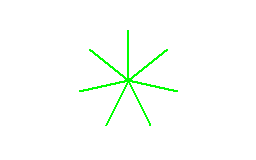How to Use the SCANNER - From Paper to Digital
Giuseppe Di Grande Updated the 10/23/2024 08:00
Next to your desktop Computer, there's a rectangular box with a lid that lifts up and a glass-like surface. You've been wondering for a while what it's for, suspecting it might be an electronic aquarium for your digital fish. But no, it's a Scanner. Have you ever used it?
A Scanner is a device used to capture analog images and convert them into digital ones. With it, you can digitize sheets, photos, slides, etc., to store them digitally, edit them, include them in electronic documents, reuse them, photocopy them, or extract text or information.
Biblos uses scanners for various purposes:
- To acquire images and insert them into documents
- To acquire images and transform them into tactile graphics
- To acquire images for photocopying
- To acquire images and recognize their text
In all these cases, the first time only, it is necessary to tell Biblos which Scanner to use and what scanning parameters to operate with. Sure, you only have one Scanner and think it unnecessary to configure it. Try using it without setting anything up, but later come back here for instructions on how to configure it properly.
There's no direct path to Scanner settings, but you can reach them by using one of the aforementioned acquisition tools. Let's do it together by configuring your Scanner while acquiring an image:
- Go to Insert/Images/From Scanner...
- Click the Set... button
- If you see the message No devices available to acquire images., it means the Scanner is turned off or not installed correctly. Turn it on or reinstall it.
- In the settings window, the most important option is Scanner Device. Usually, there's only one option, but if multiple scanners are listed, choose the one you want to use.
- The other settings define the scanning characteristics:
- Scan Area: Determines the surface of the Scanner to use. Typically, standard options like A4 are selected.
- Quality Type: The resolution in points to use. Higher values result in more detailed digital images. DPI stands for Dots Per Inch. An inch measures 2.54 cm. For example, 300 DPI means 300 points are captured within 2.54 cm.
- Color Type: Specifies whether to scan in color, black and white, etc.
- Brightness: Adjusts the brightness of the scanned images.
- Contrast: Adjusts the contrast between different colors.
- Highlight Darks: Enhances darker colors.
- Highlight Lights: Enhances lighter colors.
- Rotation: Allows you to rotate the image by a certain number of degrees.
- When finished, click OK
After choosing these parameters—this is done only once—you can scan as many images as you like. Now you're back in the previous window.
In the image acquisition window, to scan an image, click the Acquire button. First, place a photo face down on the Scanner's glass surface, close the lid, and then click the aforementioned button.
During scanning, the Scanner makes a faint noise—just wait. After a few seconds, the photo should appear in the acquisition window. If something went wrong, the photo won't appear, and you'll likely see an error message instead. If the photo appears, congratulations: you've just completed your first scan!
If scanning a photo seems unnecessary, you can also use your Scanner to make photocopies or recognize text on sheets. Need to photocopy something? Go to Tools/Utilities/Photocopy.... It's incredibly easy: turn on the Scanner, turn on the printer, and click the Start button—within seconds, you'll have your photocopy.
You're probably wondering about tactile graphics. I'll need to cover that separately in another article. I also haven't mentioned another frequent use of scanners: Optical Character Recognition (OCR). Since August 2019, Biblos has included this functionality, with tools for using it located under Tools/OCR/....
To conclude, here are two technical notes:
- Scanners can use drivers based on WIA 2 (Windows Image Acquisition) or TWAIN technologies.
- If WIA is used, the operating system must be at least Windows Vista, as WIA 2 (the technology Biblos uses) was introduced from that version onward.
I hope I've given you another good reason to use Biblos or to keep using it!
For further support you can subscribe the Biblos Group on Facebook.
